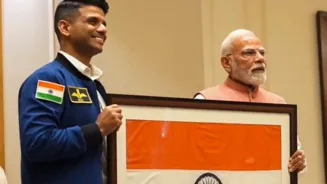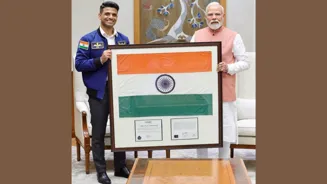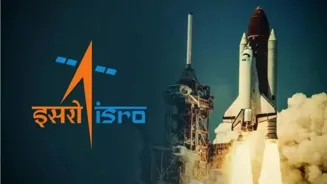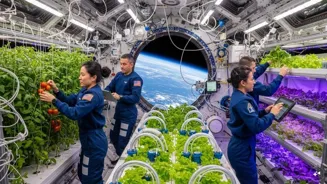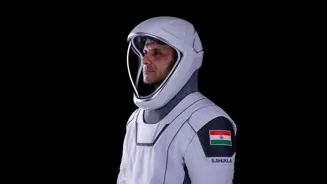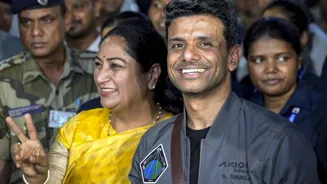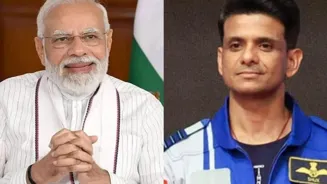Indian Air Force group captain Shubhanshu Shukla on Thursday spoke in detail about his journey to the International Space Station and said that his experience throughout the process, including at the ISS,
would be helpful in India’s Gaganyaan mission — India’s own first human spaceflight programme.
Shukla became the first Indian to travel to ISS aboard Axiom Mission 4. He boarded a SpaceX Dragon spacecraft from NASA’s Kennedy Space Center on June 25. He returned to the Earth, splashing down off the coast of California on July 15. He arrived in India on August 17 and met Prime Minister Narendra Modi the next day.
Shubhanshu Shukla Thanks Govt, ISRO
Speaking to the reporters in a joint press meet with ISRO chairman V Narayanan and Prashanth B Nair, group captain who is a part of the Gaganyaan crew, Shukla thanked the government, ISRO, and all those involved in the mission.
“I would like to start by thanking the people who have made this mission (Axiom- 4) possible. There are multiple layers to this, not just one person. I will start by thanking the Government of India for conceiving this mission and finally making it happen. I would like to thank ISRO for enabling this entire mission, the people, my colleagues at ISRO who have worked so hard to successfully execute it. I would also like to thank the PIs and researchers who have enabled the experiments for the Axiom 4 mission; their contribution has been invaluable,” he said.
Shubhanshu Shukla Shares His Experience On ISS
Detailing his journey to the International Space Station, the IAF officer said that they were tasked to perform experiments and also capture photos and videos.
#WATCH | Delhi | On Axiom-4 mission, Group Captain Shubhanshu Shukla says, “… I want to thank the Indian Government, ISRO and my colleagues… We were flying on top of the Falcon 9 Vehicle… Crew Dragon is one of the three vehicles that can take humans to space… My profile… pic.twitter.com/qYRRW8ctJI
— ANI (@ANI) August 21, 2025
“We were flying on top of the Falcon 9 Vehicle… Crew Dragon is one of the three vehicles that can take humans to space… My profile in this mission was the mission pilot. There are four seats in the Crew Dragon. I was the mission pilot and I had to work with the commander and interact with the systems of the Crew Dragon… We had to perform the experiments that were conceived, developed and realised by the Indian researchers. And also to perform STEM demonstrations, capture photos and videographs,” he said.
He said that the knowledge he gained from his stay at the ISS will be handy for India’s Gaganyaan mission.
“The benefit of executing a human space mission is more than the training. The supplementary knowledge we get just by being there is invaluable. All the information I have collected in the past year will be extremely useful to us for our own missions, Gaganyaan and Bharatiya Antariksh Station… Very soon we shall send someone from our capsule, from our rocket and our soil… The experience is very different from what you learn on the ground. The body goes through a lot of changes… The body forgets how to live in gravity after spending 20 days in space,” he said.
India aims to send its astronauts into space on an Indian-built spacecraft. India will become the fourth country, after the US, Russia, and China, to send humans into space on its own.
(With inputs from agencies)
